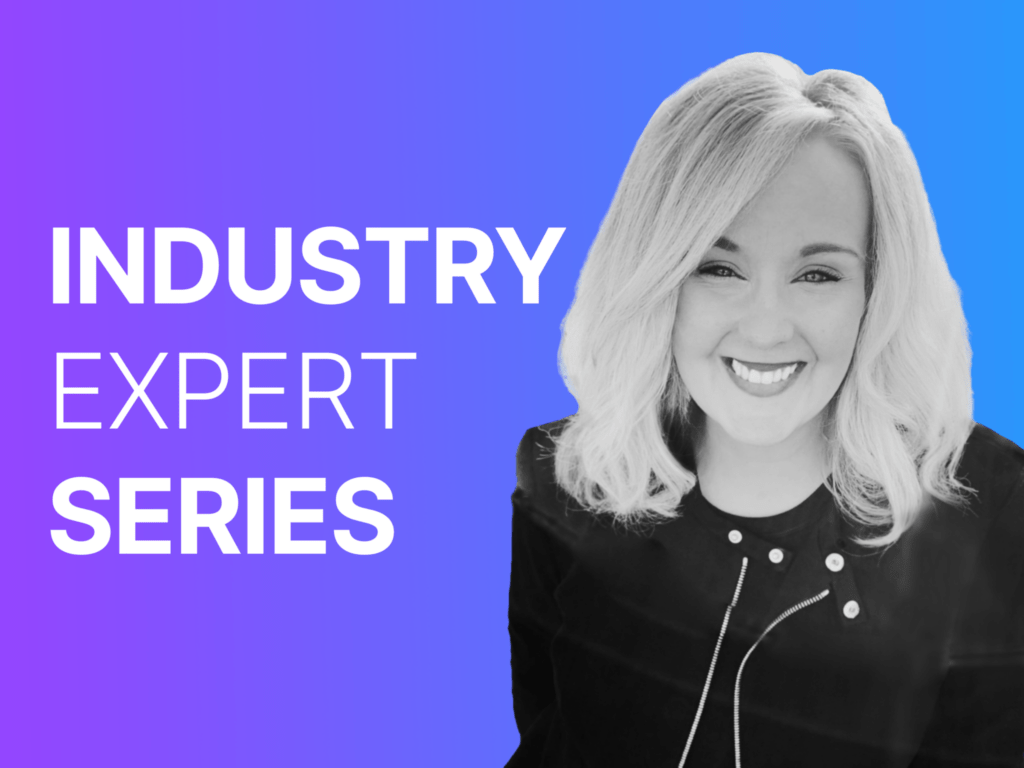A little bit about Theresa:
Theresa Turner is the Creative Director, CPG at Trackmind Solutions. With a lifelong passion for health and wellness, Theresa leads strategy and brand development for CPG, supplement, health, wellness and beauty clients.
With extensive experience in e-Commerce, web, platform & app design, an award-winning track record in branding, marketing and packaging design, and decades-long experience working with some of the most innovative companies in the health & wellness space, she helps clients through the exploration and creation of cohesive and profitable strategies and design implementation for their businesses.
Over the past two decades, she’s worked with a wide range of clients – from startups to Fortune 500 companies – to launch dozens of CPG products, create millions in value for multiple eCommerce businesses, lead companies in the strategic marketing of their products and helped to create a groundbreaking patient-practitioner healthcare platform.This interview has been edited for brevity and clarity.
Uma: Hello and thank you so much for joining me today. Can you tell me a little bit about who you are and what you do?
Theresa: I’m Theresa Turner. I am a creative strategist for CPG for Trackmind Solutions. I’ve got about 20 years experience in the field of design and brand creative direction. I have a real passion for strategy and currently I’m working as a creative strategist for CPG brands.
Uma: In your 20 years of experience working for CPG brands, specifically in supplements, can you tell me a little bit about how a supplement brand can get started? What’s the process like?
Theresa: Sure, there’s a lot to ideation. Right? In the ideation process, that’s where you start to find a point of difference, and I’m going to talk about point of difference in this interview because it’s super, super important to stand out. The market is super, super crowded. You’ve got to find a way to stand out and there are a million ways to do it. But when you’re thinking about what your supplement product is, you can find your point of difference in multiple, multiple areas.
Think about what you’re trying to do. Think about what you’re trying to bring to market. Are you trying to capture a specific audience? Are you trying to make something for a specific person or a specific group of people? Do you have an amazing ingredient that you’re trying to bring to market or a formulation that’s going to disrupt everything? Do you have a new technology or delivery system? A new format, new way of taking supplements that you’re going to be working with? Are you trying to just simply enter a market where you can see that you can create some good returns and you can create market share?
There are a million different ways that you can ideate on creating your supplement, but one of the most fascinating things that I see is people who are solving a problem, a specific problem that people that take supplements need solved. Any one of those things or all of those things can help you create a point of difference but I would suggest in the early stages when you’re ideating and you’re thinking about what your supplement is, try to think about how it’s going to be different than something that’s on the market today.
Uma: We keep hearing the term “strategy” a lot in business. What does that entail when you are designing and building a supplement brand? And why is it important in order to make a supplement brand stand out to consumers?
Theresa: Sure. Strategy, in my mind, is being able to articulate and document the thing that you want to do and having the research to back it up in my mind is so, so critical. I think of strategy as a multi-pronged approach. Just understanding what’s out there, who’s out there, what they need and how you can fulfill that for them.
The first thing that I look at in any strategy, doesn’t matter whether it’s supplements or any other CPG product, even any product out there, any tech product even, is looking at the market and their competition, getting the scoop. Looking at it from a broad scope, looking at who are your direct competitors, who would be your niche competitors, your up and comers? Where are they playing? What channels are they selling through? Are they selling through eCommerce? Are they selling through your drug stores or supermarkets? Natural food stores? Are they selling through practitioners?
Find the place where you feel like you can play. That’s why having that research up front is so, so critical. One way here, you can create a point of difference is finding a gap in the market where you can find a new opportunity, a new channel, a new distribution strategy. In the past few years, you’ve seen a rise in people creating customized supplement packets. Makes it super, super easy for people to take their supplements. Obviously, there’s a gap in the market, which now a lot of people have capitalized on. But finding that basis is so, so critical.
The next thing I would look at is your customer. Who do you feel your customer is? A lot of times I go super, super broad. Who is my audience? A lot of people will come to me and say, “Oh, I want to appeal to millennials.” Well, that’s fantastic, but millennials are not one homogenous group. We have to niche down. We have to talk about “what do they like?” What does the person that is taking your supplement like? What do they need? Be able to better identify who that person is through persona building. To say, “This person is, say, a backpacker, a hiker. They need energy. They want all natural products.” Things like that.
And then also, another thing that I love to do in looking at customers, is to understand customer types. Everybody’s motivated by different things. I use a thing called customer types to basically split people into categories in how they’re thinking about a purchase.
Basically, it’s important to understand: what is the customer’s motivation? What are they influenced by? Are they influenced by social media? Where do they shop? What do they think about pricing? Do they look for brand name premium products or are they looking to save money? Understanding the type of customer you’re working with and the profile of how they think about purchases is also critical to that as well.
I look at the larger audience, which, like I said, you come to me, you say, “I want to appeal to millennials.” That’s great. But then who is that millennial? Your backpacker, your hiker, or your person that is very much into, say, beauty or healthcare or anything like that? And then I sort of drill down into the customer types, which is going to explain to me how they’re looking to buy supplement products. I think a way that you can create a point of difference there, is by niching down, finding the smallest niche who will buy the product that you’re offering.
If you’re looking at a customer type who is an impulsive spender, for example, they’re going to be very hung up on the product packaging. If you create a new type of package that’s super appealing to them then, hey, then, you’ve got a definite point of difference there.
Uma: Yep, that’s me.
Theresa: Yeah. I have so many examples of impulse purchases that are sitting on my shelves. But the thing about that is you also have to think about repurchase. Once they get that product on their shelves, they have to try it and then when they try it, they have to love it and they have to tell other people about it. When we talk about getting people to buy something, you’re only talking about the first purchase. You need continual adherence to that product in order for that person to purchase again.
A lot of times subscription models are helpful for that. Somebody doesn’t have to think about it. Imagine a probiotic. It’s something we all know we need to take. We know that gut health is super, super important so basically, if that probiotic arrives on my doorstep, I’m not gonna forget to take it.
I want to talk a little bit about product strategy. It’s something that we do a lot of. It’s something that’s super, super important and it’s a huge way that you can stand out. Supplements now, if you go down any aisle in a drug store or a supermarket, you’re going to find supplement products. You’re going to find them in traditional supplement aisles. You’re going to see things like your capsules, tablets, gummies, fast melts. All of that.
You’re also going to see powders, shakes, drinks. But then you’re going to see snacks and dairy products and beauty products that all are sort of informing supplements right now. When you think about where to put your supplement, it doesn’t have to be in a bottle anymore. One of the things that we see that we love. We love stick packs. If you have a supplement that is able to be put into powder form and you’re able to shake that up with your water, take it on the go, it’s good for the environment, it’s attractive, it’s appealing. You can put it in your purse, your backpack, and take it with you wherever you want to go. Thinking about that is super, super helpful.
Another thing to think about is your ingredients. A lot of people have proprietary ingredients that they want to bring to market. If you think just about probiotics in particular, the number of strains that are out there, the number of proprietary strains that are out there that are helpful for any number of systems is incredible.
If you have something that’s proprietary that you can capitalize on, it’s amazing. Other companies have branded ingredients that you can think about putting in your product. But overall, probably the biggest thing to be cognizant of is the consumer. People are looking for specific things. They’re looking for gluten free products, dairy free, soy free, eight major allergen free in some cases, organic and vegan and kosher. Every consumer is looking for a specific type of product and you have to understand their needs and what they’re going to be looking for when they look at the back of your bottle.
In your product, there’s a few other things that you can think about in order to create a point of difference in the market. The flavor of the product. Now, that’s not always applicable but think about the taste. As you see over the last several years, with popular things like gummies and chewables and all of those types of products, flavor becomes super important.
Think about technology. There are a lot of companies that have interesting delivery systems. A twist cap potentially that releases your product into water or an all-in-one type of vitamin product that’s specifically customized to you. If you have a new technology, that’s a great way to have a point of difference.
Once you have everything in place, once you have all your research on your market, your competitors, your customers, once you’ve got your product formulated, it’s a really good time to do your brand positioning. This is a statement that makes you stand out in the marketplace. Your brand positioning is your position in the market. It is not your value proposition, necessarily. But it is the way that you think that you can stand out. If you have that one sentence, one core statement that you can lean on, you’ll always move in the right direction.
From your brand positioning, that’s where things start to get exciting. You start to see things come to life. When we think about a brand, we don’t think about a logo. We don’t think about a color palette. It’s really, a brand is a personality. It’s how you speak, it’s what you wear, it’s how you dress it up and make it come to life visually and in voice and tone.
During the brand positioning step, you want to be super, super careful to ensure that not only, one, you’re standing out in the market but that you’re creating that brand personality through voice and tone. You’re creating that visual brand that always has a sense of promise. Your brand is your promise to your customer. This is who I am. This is always who I’m going to be. You can trust that what I say and how I say it is always going to be accurate.
Once you have a brand in place, not only your visual branding but also your voice and tone, how do you express that? There are two big ways that you can express that. One is through your packaging or your on-shelf experience. What does that packaging look like? What does it feel like? What makes someone want to choose you over another just based on the looks of your product? Creating something beautiful is wonderful but having done all your research about the market, you definitely want to stand out through your packaging in some way, shape or form.
You create an interesting cap. You can use an interesting color palette. You can use an interesting bottle or box, in some cases, to get the point across. When we’re thinking about packaging, another thing to think about is customers now are expecting an element of sustainability. There are a lot of brands that are doing that super, super well right now. Whether it’s using pouches that are recyclable, whether it is using low energy methods to create your product. In some way, shape or form, your product should have some element of sustainability.
Probably the biggest thing to think about, and you should be thinking about this really from the beginning, is your marketing, your customer experience. Everything that’s going to be pushed out sort of after your product is created is marketing. Whether it’s influencer marketing, whether it’s social, whether it’s your website or traditional marketing. Say, you’re on TV, outdoor billboards. Everything is marketing.
What you want to do is, using the voice that you’ve created in your brand and using the visual elements that you’ve created in your brand, find the best places to get that message out. Find where your audience is and meet them where they are. For example, if I’m trying to address baby boomers, I’m not necessarily going to try to market through TikTok. But I might use Facebook.
Knowing your channel and knowing where your customers are is absolutely critical.
Aside from social channels, probably one of your biggest places that you will market is your eCommerce website. Whether you’re using your own eCommerce website to sell or whether it’s part of a bigger strategy that includes things like Amazon or Walmart, Target, any of those, you have to have a good eComm website and it has to have a really good sales process.
Uma: What are some ways in which supplement brands can create a good experience for their consumers?
Theresa: Thinking about the customer experience or the user experience of your site, there are a lot of ways that you can make it easier for people to understand your product and also to buy it. One of the biggest things about supplements is education. It’s really, really important to educate your customers on the what and the why. There are a lot of places within supplements that people just don’t know. They might hear of a type of product that maybe they ought to be taking or they want to take for say, hair, skin and nails.
But they want to understand the “why.” Why should they choose your product over something else? Why is your product better? Your eCommerce website is a great place to do that. I basically recommend that anyone who has an eCommerce website has some sort of education element.
The next thing would be the ease of the customer experience. How easy is it for someone to check out? Most people are incorporating some sort of subscription service on their site. It’s another layer of complexity. Yes, they want subscriptions but they also want to know that they can trust you that you can cancel your subscription if they need to. Having good communication with the customer is absolutely key throughout the sales process and beyond. Because ultimately, what we want to do, we want them to adhere to the product. Once they get it and they’re satisfied with it, they want to keep taking it.
Uma: What are three things supplement brands should keep in mind while starting out?
Theresa: I think the biggest thing to think about is what is your budget? We know that there are a lot of costs involved in creating a supplement brand. A lot of times, we skip to the end, which is marketing. Knowing what your marketing budget is is going to be absolutely critical. It doesn’t matter if you make the greatest product on earth. People have to know about it.
Creating a marketing budget that’s sort of in line with what you’re going to need to spend to be able to get it in front of people is absolutely critical. Think about that way up front. Obviously, know your market. Know your audience. Know your competition and create a good strategy and a good plan for that marketing.
The last thing is: have a good attorney. When it comes to trademarks, when it comes to regulations and claims, supplements can be super, super difficult. The people on your team and the people on any team that are helping with your product formulation can be really, really helpful, but you always want to make sure that you’re staying within the bounds of legal entities. Those are probably my biggest takeaways.
Uma: Thank you so much for joining me today.
Theresa: Thank you!
Enjoying our interview series so far? Check out our interviews with other founders. Follow us on Instagram and LinkedIn to stay connected and see more stories of incredible industry experts like Theresa Turner.



